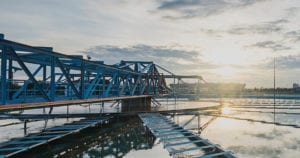Control panels house the electronics and computer brains of a system. That makes them critical to success of a production line and in other industrial settings. However, their installation requirements with regard to keeping components within them cool are increasingly stringent.
One solution is to use a cooling unit. But, such a solution can be challenging in environments with outside temperatures that top 40o C. Cooling can also be more difficult in industrial settings like glassworks, sugar breweries, dairy plants, car manufacturing plants and other locations that produce airborne acids, greases, fibers and particles. These can make air handler work harder and increase its maintenance costs.
In all situations, a cabinet cooling unit must deliver maximum performance while consuming minimal energy. It has to do this even though the heat generated inside a cabinet is not fixed. Instead, the heat produced may vary widely as components cycle on and off, with thermal inertia further complicating the temperature picture. In spite of this, the cooling unit must faithfully follow a set point, which is often measured by a precise and reliable electronic thermostat.
That is the situation control panel designers and builders face. So, what should they look for in a cooling unit and why are these factors important? Here is a brief list.
- Reliability. A cooling unit has to do its job flawlessly. Otherwise it may fail and take an entire line down. Therefore, the compressors, fans, connections, electrical wiring and other components need to best-in-class. That is also the case for the manufacturing process. Welding, for instance, should be done carefully to prevent micro leaks, which can create problems for applications subject to vibration such as hoisting.
- Protection and security. The cooling unit should have a high degree of internal protection, such as IP55. Components should be robust and protected, an example being the use of a hydrophilic film on aluminum fins. That protects them against high humidity, heat, external pollution and the creation of bacteria. Also, the overall design of the cooler should offer basic and advanced aspects of safety during installation, commissioning and maintenance.
- Precision and control. The cooling unit’s controller should provide basic functions and should also allow at least two programming levels, one for immediate start and the other for later adjustments. The controller should also have a master-slave capability, which enables differing climate settings within a single system.
- Multi-versions and modularity. Because cabinet cooling projects are increasingly diverse and demanding, there should be different versions of coolers offered. There should be standard models, perhaps with country-specific versions. There also should be a heavy-duty version, for applications in deserts or near furnaces and the like.
Any cooling unit under consideration should be energy efficient. It also should be well supported. For instance, the vendor should offer software that models the heat load and helps determine the proper size for a cooling unit. That will make the solution function as it should and will also make it CAPEX friendly because you won’t be buying more cooling capacity than you need.
For an example of a system that meets all of these criteria, take a look at our ClimaSys CU and CE units. We have confirmed these as solutions where installation conditions are up to 35 ° C, with medium heat outside the control panel, and where the air quality allows proper thermal performance.
Our cooling units will respond to the most demanding aspects of your projects. Learn more by downloading our ProClima software and visiting our interactive catalog.


